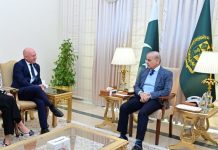DM Monitoring
Halfway through election campaigning, it occurred to me that the issues of azaadi, autonomy and Article 370 were never raised in any of the meetings, anywhere. Not once was it asked of me where I stood on these. Even in private conversations with people farmers, shopkeepers, traders, and agricultural labourers the National Conference’s demand for ‘autonomy’ or the PDP’s concept of ‘self-rule’ were never mentioned, even in passing.
The reason for this, it turned out, was simple: people didn’t see these mainstream parties as having any role in the resolution of the Kashmir issue. These parties were only about governance and, in the words of John Lewis, the civil rights pioneer, about “good trouble”. Nothing more. Nothing less either! Coexisting with this was the palpable separatist sentiment that one could sense and see. The families of militants dead or alive were res¬pected. They were invariably seen as the “village elders” who exercise influence that comes with upward social mobility. Over the years, socially, militancy had become a rite of passage.
The same people who would attend election rallies would also attend the funerals of militants. In their mind there seemed no conflict between the two. The former was an individual obl¬igation born out of material needs, while the latter was a collective desire engendered by a certain understanding of political history. These two worlds were not reconciled with each other, but inevitably coexisted. In between, of course, there were occasions of confrontation.
At the level of local political workers, the BJP didn’t exist neither in their territory nor on their minds. No political field worker or supporter saw the BJP as an opponent, let alone a serious adversary. For PDP workers, it was the National Conference or the Congress that was the adversary and vice versa. Politics at the grassroots, being much localised, is quite different from the view on the tree top. No wonder, at the party level, the BJP was seen and discussed as the single biggest opponent!
Article 370 was there in the people’s consciousness a la Robert Musil not in their conversations. In fact, Kashmir’s relationship with India was not an issue any longer.
And then August 5, 2019, happened. Kashmir, in popular perception all over the country, was reintegrated yet again; it was reconceived, if not rec¬laimed. For the government of India, the barrier to democracy and development was abolished. Never mind that way back on December 4, 1964, then Union home minister Gulzari Lal Nanda had candidly informed Parliament that “Article 370, whether you keep it or not, has been completely emptied of its contents, nothing has been left in it”. Nanda was not given to hyperbole. He was absolutely right.
Everyone without exception farmers, shopkeepers, traders, agricultural labourers are feeling hum-iliated, hoodwinked and helpless. The ghost of 370 is harbouring the spirit of resentment. This, in turn, has enlarged the constituency of supporters for resistance. For the old-timers, it was more than a mere article of the Constitution, it was an article of faith. They are in an existential and moral crisis as if they had been living in sin. Article 370 is reborn, resurgent. This time not as an ideology or an issue, but as an illustration an example of yet another betrayal, both by the local mainstream parties and by “Hindustan”.




